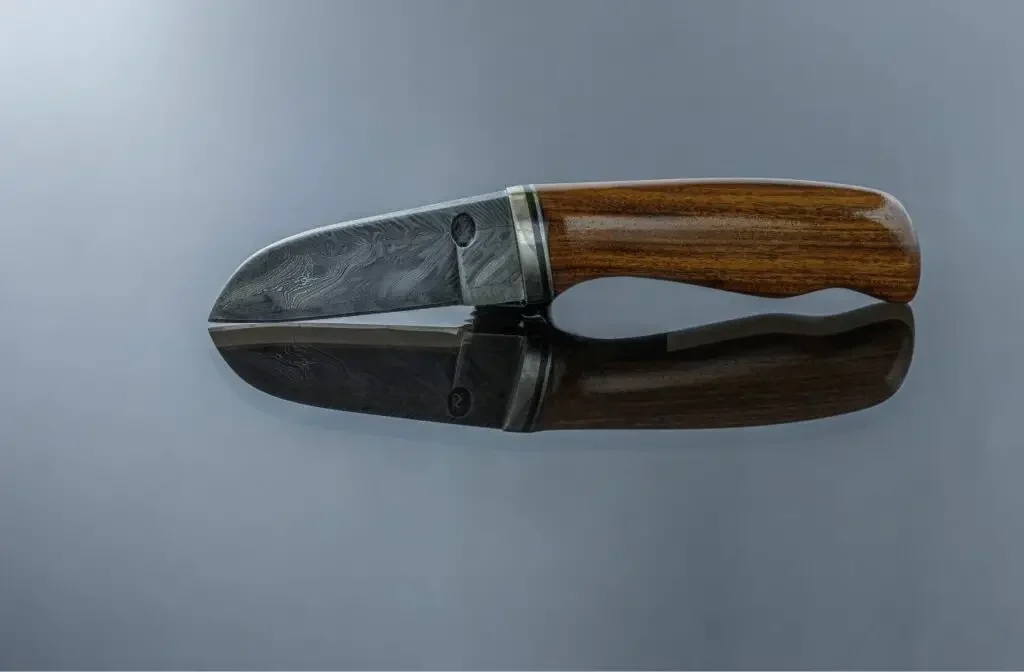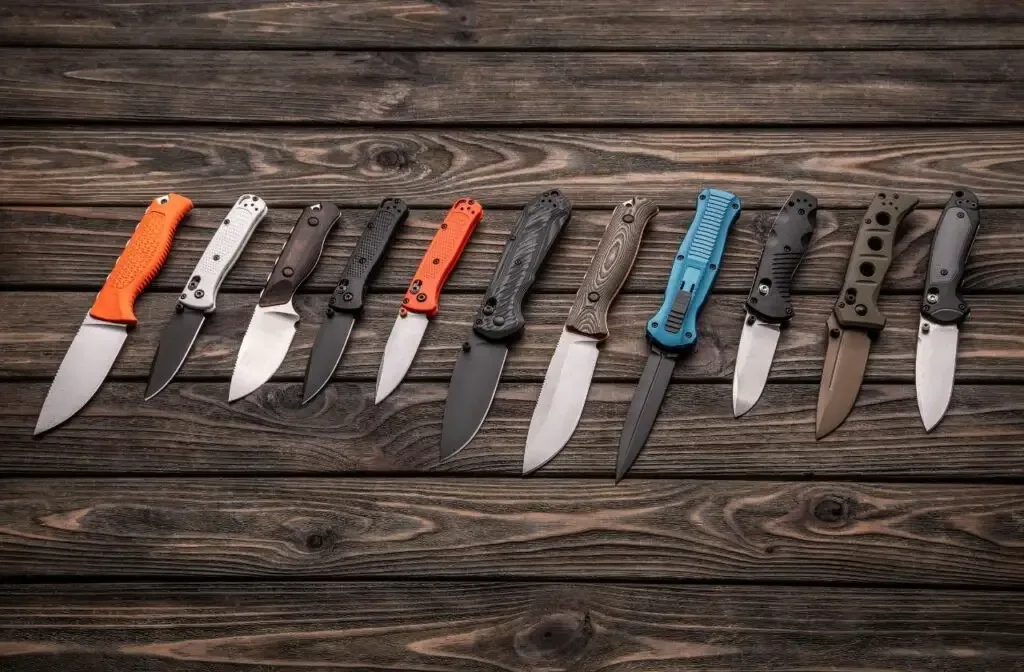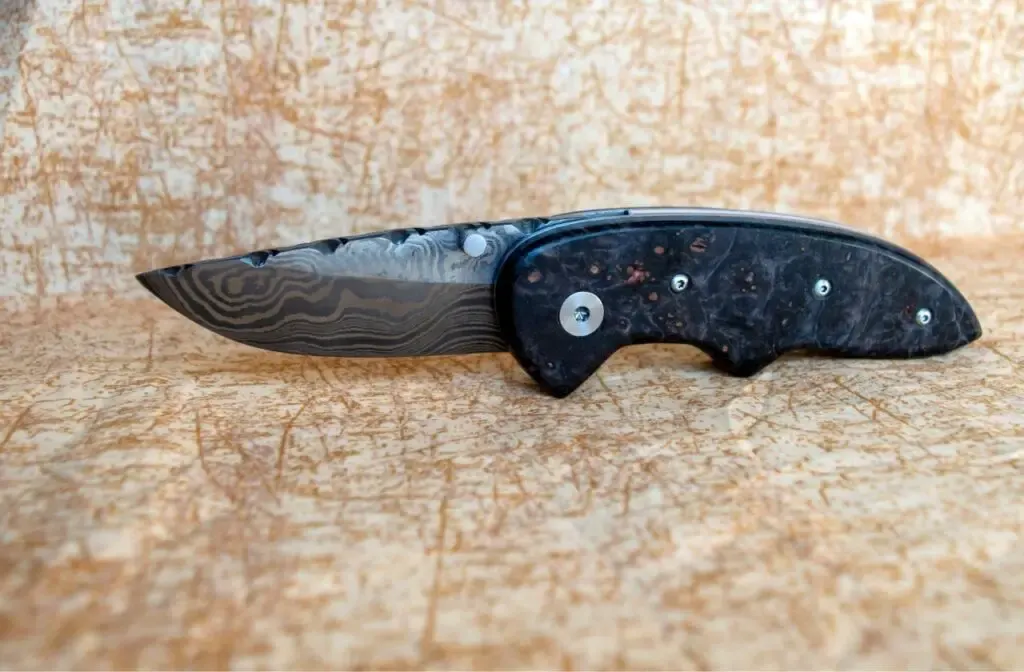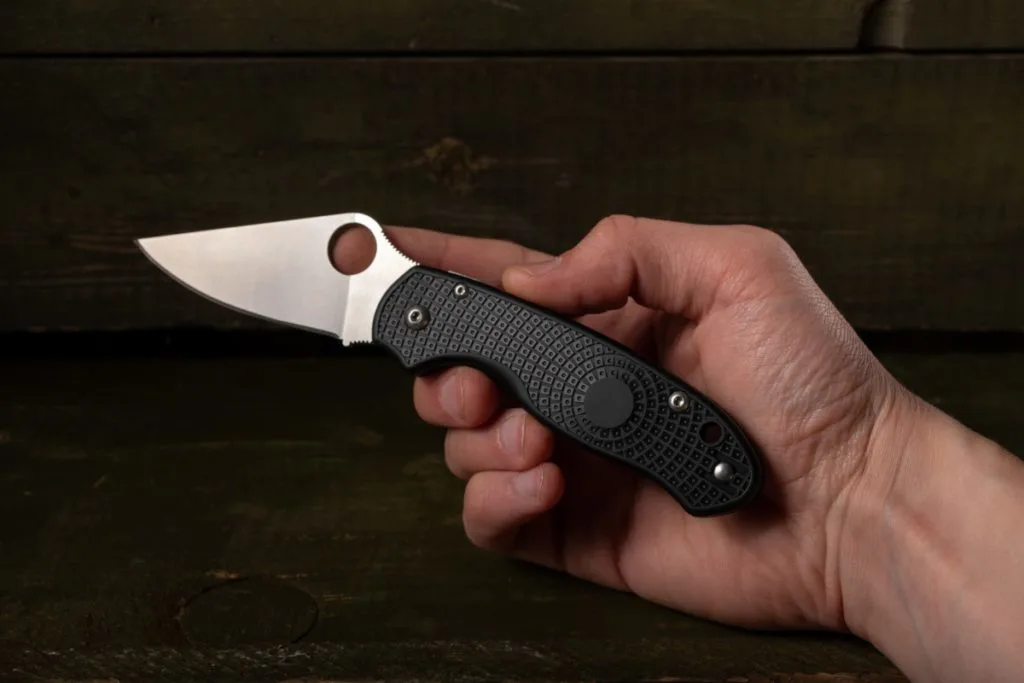As an Amazon Associate, we earn from qualifying purchases with no additional costs for you.
A pocket knife is the original EDC knife, designed to be carried on your person and available for a wide range of tasks. Due to the varied uses of pocket knives, what steel is the best choice for these versatile knives? How do you choose the best steel for your pocket knife blade?
The best steel for pocket knife blades can be from the stainless steel category or the high carbon steel and tool steel categories. The best steel from these categories for your pocket knife blade will be determined by the performance characteristics you need from the blade.
The emergence of new steels and improved treatment processes has resulted in a wide range of steel types to choose from for your pocket knife. If the choice is leaving you at a loss, we have all the relevant information for you to make an educated choice for steel that best suits your needs in a pocket knife.
If you are interested in checking out a pocket knife with the best steel we recommend and use (Spyderco Para 3), you can find them by clicking here (Amazon link).

Types Of Steel For Pocket Knives
When steels are formulated for making knives, various elements are added to the steel to impart desirable characteristics to the steel. These characteristics are intended to improve the performance of the blade for its intended purpose.
Most knife owners or prospective buyers are not familiar with the different steel types and the features and characteristics of the steel. We have compiled an outline of the most common steels used to make knives, including pocket knives, which will give you a better understanding of these steels. This will help you to make the right choice for the blade steel for your pocket knife.
Before we get into the types of steel, it is appropriate to investigate what features you should look for in a pocket knife blade.
Pocket Knife Blade Toughness And Hardness
You will hear the terms hardness and toughness bandied about in knife circles, and these are criteria you should examine as characteristics in pocket knife blade steel.
Blade hardness is a measure of how hard the steel is, which affects many other aspects of the steel’s characteristics. Steel that is too hard is usually very brittle and susceptible to cracking and chipping. Steel that is too soft will wear away quickly, and the edge will roll over, reducing edge retention. The unit of measure for hardness is the Rockwell C scale, often called HRC.
This is where toughness comes in. Blade toughness is the ability of the steel to withstand chipping and cracking, especially when the knife is subjected to sudden impact. Toughness is imparted to the steel by combining different alloys and metal types into the steel composition!
Consequently, you should look for steel with a good combination of hardness and toughness that will make the knife durable without being brittle.
Wear Resistance For Pocket Knife Blades
Wear resistance relates to how the steel reacts to abrasive wear from normal use, and it is often related to the hardness or HRC value of the steel.
Other alloys and minerals can be added to the steel’s composition to improve the steel’s ability to withstand wear to a greater degree.
Pocket Knife Blade Corrosion Resistance
Pocket knives are used for a myriad of tasks and often in conditions that you would not subject other knives to. They are field-use knives that should have the ability to withstand abuses that would not be contemplated for other knife types.
Pocket knives are used in the rain, in the dirt, and used to cut items that other knives are not expected to cut, exposing the blade to chemicals and potentially corrosive substances. They are also carried in pockets, which can be a hot and humid environment for steel and encourage the formation of rust.
As a result, a pocket knife blade should be made from steel that will be resistant to corrosion, or you will need to be aware that you will need to take additional precautions to prevent the blade from becoming corroded.
Edge Retention On Pocket Knife Blades
Pocket knives are used for a wide variety of everyday tasks, from opening boxes to cutting plastic piping to being used as a screwdriver in a pinch.
If you are the outdoors type, they can be used for bushcrafting tasks such as cutting and shaping sticks and twigs for traps, fishing poles, cutting paracord and other forms of twine, carving fire-starting equipment, and many other survival tasks.
This varied use requires blade steel with good edge retention; otherwise, you will spend more time sharpening the knife than you will using it!
Cost Of Knife Steel For Pocket Knife Blades
Cost is always a factor when looking for premium quality products, which holds true for blade steel. Some of the high-end steel products are costly to make and use expensive additives to improve the quality features of the steel.
These expensive materials in high-end steel translate to a more expensive pocket knife. This means that the ideal knife steel may push the pocket knife price out of your budget range. You should select the best steel you can within your budget in this event.
TIP: Have you ever broken your pocket knife clip? It happens to all of us from time to time, and that’s why it is good to know how to fix a bent pocket knife clip. Find out more in the article below:
DIY: Fixing a Bent Pocket Knife Clip in THREE EASY STEPS
What Is The Best Steel For Pocket Knives?
When you break it down to the foundational basics, there are three main steel types used to produce knife blades. All these steels can be used in the production of pocket knives and other larger knives.
The three main steel categories are as follows.
- Stainless steel
- High carbon steel
- Tool steel
Stainless Steel For Pocket Knives
Stainless steel is steel high in chromium, at least 13%, and other metals that increase corrosion resistance. However, the corrosion resistance comes at the cost of diminished toughness, hardness, and edge retention.
This does not mean stainless steel is inferior to other steels for pocket knives, but rather this steel should be chosen when corrosion resistance is of paramount importance. The wear resistance of stainless steel makes these knives more difficult to sharpen.
There are various stainless steel versions, with many modern versions coming very close in hardness, toughness, and edge retention to other non-stainless types. This stainless steel grouping will see steels such as 400, VG, MoV, CTS, 154CM, SxxV series, and Sandvik and AUS steel.
TIP: Many people mistakenly assume that because a stainless steel knife is more difficult to sharpen, it cannot be sharpened. Check out the best way to sharpen a stainless steel knives in the article below:
DIY Guide: Best Way To Sharpen A Stainless Steel Knife
High Carbon Steel For Pocket Knife Blades
High-carbon steel has a higher carbon component than other steel types, which imparts a greater degree of hardness, toughness, and edge retention to the blade.
High-carbon steel knives are easier to sharpen and can be sharpened to a finer, sharper edge than stainless steel. High carbon steel holds an edge for much longer than stainless steel but is more susceptible to corrosion.
High carbon steel is ideal for hardworking knives such as bushcraft and survival applications, where edge retention and durability are primarily important. The most popular high-carbon steel for pocket knives is 1095 and 5160, commonly known as spring steel.
Tool Steel For Pocket Knife Blades
Tool steel is a type of high-carbon steel typically used to produce cutting tools for workshops and industrial applications. This is due to its exceptional edge retention, toughness, and durability.
These features of the steel make it excellent as knife steel, and it is popular among knife makers for this reason.
There are a few variations of tool steel, each with its own unique characteristics. Some of the most popular tool steels for pocket knife blades are O1, D2, and the CPM series of tool steels. Expensive tool steel called M4 is also used for knife making, but these knives will be considerably pricier than other knives made from tool steel.
Is Damascus Steel Good For Pocket Knives?

Damascus steel for knives has seen a recent popularity surge, but this steel is not new. The history of Damascus Steel dates back more than 2,000 years.
Damascus is popular for the aesthetically pleasing patterns produced by the folding and forge-welding of layers of different types of steel.
The strength and suitability of Damascus steel for knife blades will depend on the types of steel included in the making of the Damascus.
Consequently, Damascus steel is good for pocket knives, provided that the steel included in the making of the Damascus is suitable for knife blades.
Is D2 Steel Good For Pocket Knives?
D2 is one of the steel types included in the tool steel category and makes very good steel for pocket knife blades.
The chromium content in D2 steel is much higher than in other tool steel types but not high enough to warrant the steel being classified as stainless steel.
This quality makes D2 steel considerably more corrosion-resistant than other tool steel varieties. This makes a good compromise between stainless steel and high carbon steel ideal for the tasks and environments pocket knives are exposed to.
TIP: Have you ever looked at your own pocket knife and wondered why there are holes in the handle? Check out the explanation in the article below:
6 Reasons Why (Some) Knives Have Holes In The Handle
Strongest Steel For Pocket Knives

Steel produced by the Austrian steel company Bohler termed M390 steel, is widely considered the strongest steel for knife blades.
The steel was not specifically developed for knife making but rather for industrial applications. It turns out that the characteristics of this steel made it ideal for knife blades.
This steel has a high 18% chromium content, making it extremely corrosion-resistant and wear-resistant. The manufacturing process, called powder metallurgy, allows the inclusion of vanadium carbide, which bumps up the carbon content of the metal.
These combinations and the manufacturing process allow the M390 stainless steel to be produced with qualities matching both stainless and high-carbon steel.
Another great steel comparable to M390 is the tool steel CPM S110V, which has similar characteristics. These two steel types are included in the category of modern super steels that are only possible with modern metallurgy techniques.
Maxamet is another super steel in the tool steel range, manufactured by the same supplier as CPM S110V, but does not have the same corrosion resistance as CPM S110V.
Best Stainless Steel For Pocket Knives

There are many different types and varieties of stainless steel. The quality of the steel will depend on the manufacturer’s production process and the heat treatment process of the knife maker.
While M390 may be one of the best stainless steels for a knife, it is often difficult to obtain for knifemaking since it is in demand for other industrial purposes.
A good alternative is the Chinese stainless steel 8CR13MoV, which also has a relatively high carbon content, imparting better edge retention and overall toughness to the blade.
BTW: If you want to know more about Japanese and other knives and their sharpening, check out the books listed above. These books are recommended by professional sharpeners and knife makers (Amazon links):
- Japanese Kitchen Knives: Essential Techniques and Recipes
- The Knifenerd Guide to Japanese Knives
- Knife: The Culture, Craft, and Cult of the Cook’s Knife
- Sharp: The Definitive Introduction to Knives, Sharpening, and Cutting Techniques, with Recipes from Great Chefs
How To Choose Steel For Your Pocket Knife

The best way to select the most appropriate steel for your pocket knife is to evaluate which characteristic of the steel is most important for your requirements in a knife.
A stainless steel blade is probably the most appropriate choice if your pocket knife is regularly exposed to damp or high-humidity conditions.
If you regularly use your pocket knife for bushcraft-type work or need it to hold an edge better, then tools steel or high carbon steel would be the preferred choice.
The super steels offer a good balance of both stainless and high carbon characteristics, but these knives usually carry a higher price tag. A pocket knife with a blade made from one of these steel types will be the optimal choice if you have scope in your budget.
TIP: Pocket knives consist of more parts than any other knife type. Do you know them all? Find out the explanation for all parts of a pocket knife in the article below:
What Are Parts of Pocket Knife Called? ALL Parts Explained
Pocket Knives With Best Steel
For your convenience, we have selected a couple of pocket knives made from great quality steel you can rely on to give excellent performance in most conditions.
Spyderco Para 3 Maxamet Signature Pocket Knife
Spyderco is an American company from Colorado that has made a name for itself by the quality knives they produce.
The Spyderco Para 3 (Amazon link) is a great EDC pocket knife with a short blade registering only 2.95 inches. While the blade may seem small, it is a very capable length, and the shorter blade allows for a minimalist approach to the knife’s design.
The blade is made from Maxamet, a super steel in the tool steel category. This steel provides superior corrosion and wear resistance, with the advantage of the toughness and edge retention of high-carbon steel.
TIP: Check out the latest prices for Spyderco Para 3 pocket knife on Amazon here.
Kershaw Brawler Pocket Knife
The Kershaw Brawler is a pocket knife offered by Kershaw’s famed knifemaking brand. Kershaw is an American company operating out of Portland, Oregon.
The Kershaw Brawler Pocket Knife (Amazon link) is a great military-looking blade. Don’t be fooled by the black oxidation coating on the blade; this knife blade is made from 8Cr13MoV stainless steel. The black coating is chemical oxidation to provide additional rust protection, improve aesthetics, and give the knife an overall tactical look.
8Cr13MoV stainless steel has slightly less nickel included in the formula, which increases the blade’s edge retention and edge durability. The blade length is 3 inches, which is an ideal size for an EDC pocket knife.
TIP: Check out the latest prices for the Kershaw Brawler pocket knife on Amazon here.
Why Pocket Knife Blade Steel Matters
When it comes to pocket knives, the blade’s steel isn’t just a matter of aesthetics or brand preference; it’s a pivotal factor determining the knife’s overall performance and longevity. Here’s why the choice of blade steel is critical:
- Usability: The type of steel directly influences how the knife performs in various tasks. Whether you’re opening packages, preparing kindling for a campfire, or performing intricate tasks, the right steel ensures the knife is up to the challenge.
- Durability: A pocket knife is often a go-to tool for many, exposed to a myriad of conditions. The steel’s quality determines how well the knife can withstand these conditions without succumbing to wear and tear.
- Sharpness: The initial sharpness of a pocket knife is crucial. Some steels can be honed to a razor-sharp edge, ensuring precision in every cut.
- Edge-Retention: It’s not just about how sharp the knife can be, but how long it stays sharp. High-quality steel retains its edge longer, reducing the frequency of sharpening and ensuring the knife is always ready for action.
- Functionality: Different tasks require different knife characteristics. The steel type can influence flexibility, hardness, and corrosion resistance, ensuring the knife remains functional in diverse scenarios.
- Maintenance: Some steels are more resistant to rust and corrosion, while others might require regular oiling. The choice of steel can determine the level of maintenance needed to keep the knife in optimal condition.
Highlighting the Best Steel for Pocket Knives: Based on the insights from the article, M390 steel, produced by the Austrian steel company Bohler, stands out as a top contender.
This steel is renowned for its exceptional corrosion and wear resistance, striking a balance between the best attributes of both stainless and high-carbon steel. It’s a testament to modern metallurgy techniques, making it a prime choice for those seeking the pinnacle of pocket knife performance.
The steel of your pocket knife isn’t just a technical specification; it’s the heart of the knife. It determines how well the knife serves you, how long it lasts, and how much care it demands. So, when choosing a pocket knife, give the blade’s steel the consideration it deserves.
Conclusion
Pocket knives experience much more hard use than many other knives simply because of their convenience. A knife in the pocket will be used for many tasks for which a knife should not be used.
However, this is part of the convenience of carrying a pocket knife. You have an edge tool available when you need one. This use and abuse of a pocket knife means that care should be taken when selecting the blade steel.
If you have never carried a pocket knife, select one of the knives we have recommended, carry it for a week, and you will wonder why you have never carried a pocket knife before.
TIP: A handy sharpening tool for your pocket knife would be a good investment to keep your EDC knife sharp. Check out the best knife sharpeners for pocket knives in the article below:
The 4 Best Knife Sharpeners For Pocket Knives
